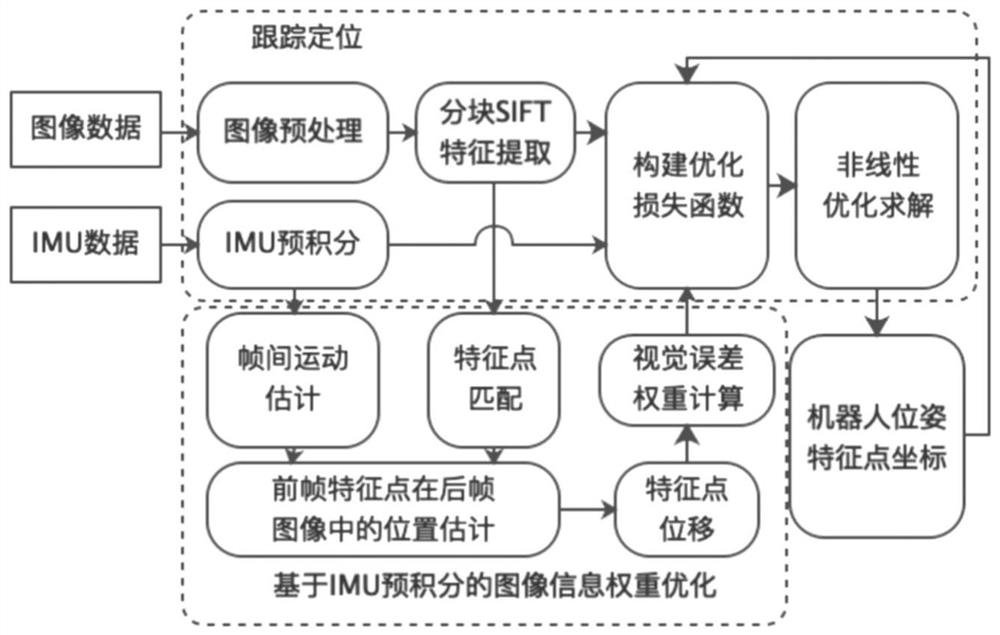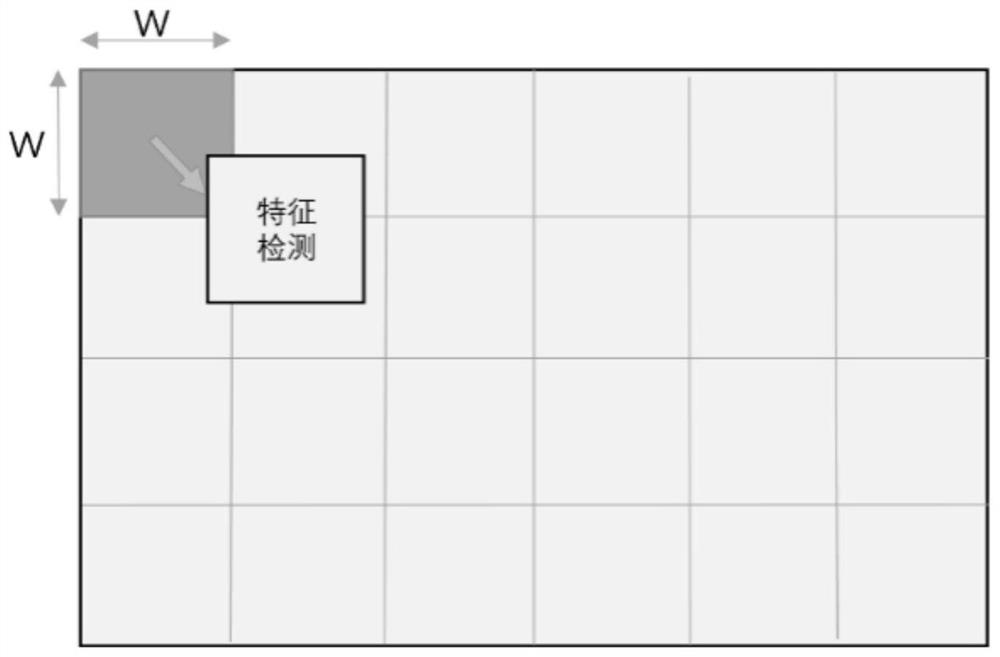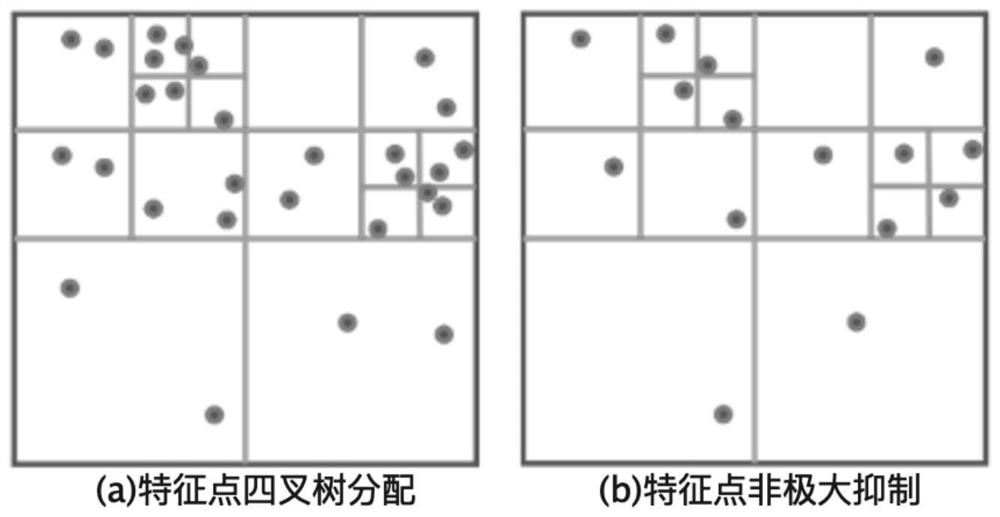Robot SLAM method and system used in outdoor feature sparse environment
A robotic and sparse technology, applied to instruments, computer components, calculations, etc., can solve problems such as errors, unstable features, and blurred descriptions of visual features, and achieve the effects of improving positioning capabilities, high operating efficiency, and avoiding accidents
- Summary
- Abstract
- Description
- Claims
- Application Information
AI Technical Summary
Problems solved by technology
Method used
Image
Examples
Embodiment 1
[0094] The task of the present invention is to face the outdoor environment with sparse features, aiming at the problems existing in the current real-time positioning and mapping algorithms of robots, to provide a way to eliminate the influence of scene image information by image preprocessing due to drastic changes in lighting conditions, and to improve the feature extraction algorithm Obtain more robust and uniform features, and use the visual loss weight optimization algorithm based on IMU pre-integration for the globally extracted image features to optimize the visual loss function, thereby obtaining more accurate robot positioning and mapping results.
[0095] According to a kind of robot SLAM method that is used in outdoor feature sparse environment provided by the present invention, such as Figures 1 to 5 shown, including:
[0096] According to the provisions of the present invention, the system needs to input the collected environmental image data and the IMU inertial...
Embodiment 2
[0221] Embodiment 2 is a modified example of Embodiment 1
[0222] The positioning and mapping algorithm of the present invention includes (1) image preprocessing in an outdoor feature sparse environment; (2) block SIFT feature extraction; (3) three parts of visual loss weight optimization based on IMU pre-integration, by the following steps composition:
[0223] Step 1.1: Use the CLAHE local histogram equalization algorithm for images in an outdoor feature sparse environment;
[0224] Step 1.2: Apply a histogram equalization algorithm to the locally equalized image.
[0225] Step 2.1: Divide the image into small blocks, and extract SIFT features in the small blocks;
[0226] Step 2.2: Assign all the features to the quadtree. There are two left and right image blocks in the initial image. When the number of feature points in the image block is not less than 4, the left, right, top and bottom are evenly split into four small image blocks, and the steps are repeated. Until th...
PUM
 Login to View More
Login to View More Abstract
Description
Claims
Application Information
 Login to View More
Login to View More - R&D
- Intellectual Property
- Life Sciences
- Materials
- Tech Scout
- Unparalleled Data Quality
- Higher Quality Content
- 60% Fewer Hallucinations
Browse by: Latest US Patents, China's latest patents, Technical Efficacy Thesaurus, Application Domain, Technology Topic, Popular Technical Reports.
© 2025 PatSnap. All rights reserved.Legal|Privacy policy|Modern Slavery Act Transparency Statement|Sitemap|About US| Contact US: help@patsnap.com



